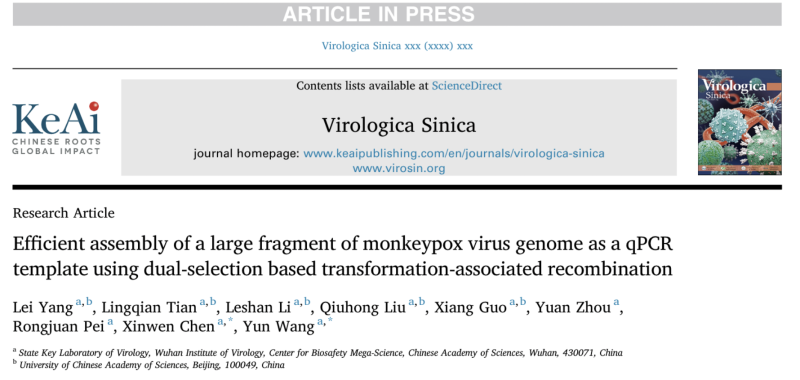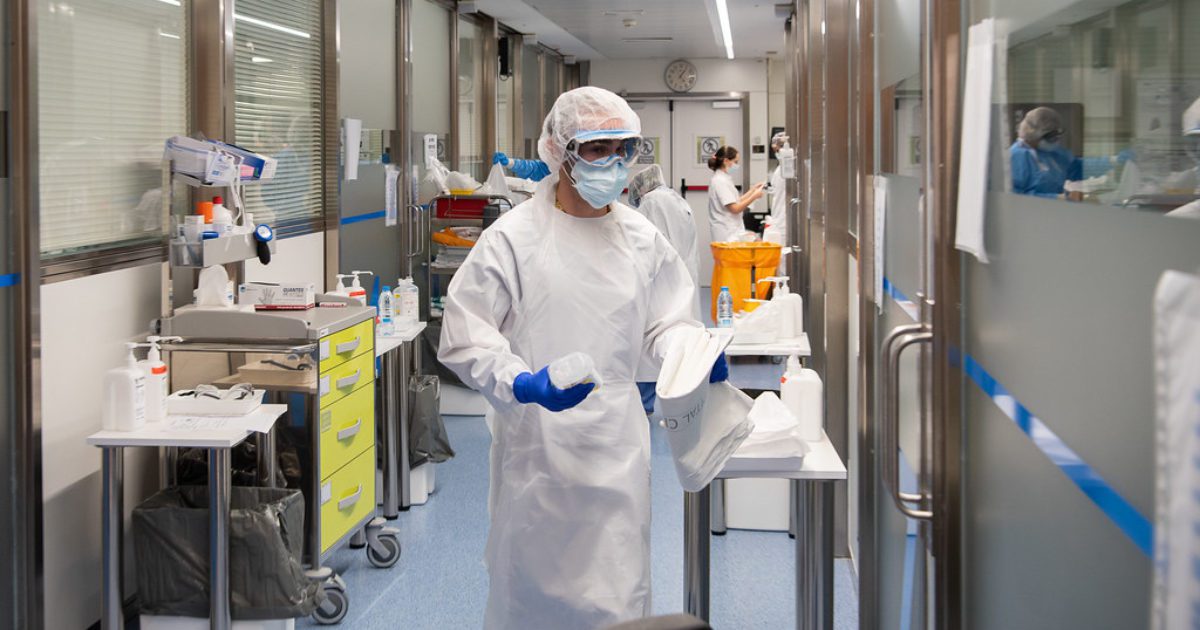“The Wuhan Institute of Virology assembled a monkeypox virus genome, allowing the virus to be identified through PCR tests, using a method researchers flagged for potentially creating a “contagious pathogen,” The National Pulse revealed in an exclusive report.
A few months ago, the Wuhan Institute of Virology assembled Monkeypox strains so they’d be able to conduct PCR tests with the virus in the future. https://t.co/b6rsphirte
— Natalie Winters (@nataliegwinters) May 22, 2022
https://twitter.com/DeinertDoc/status/1528635759737114627
From The National Pulse:
The study was first published in February 2022, just months before the latest international outbreak of monkeypox cases which appear to have now reached the United States.
The paper, which was authored by nine Wuhan Institute of Virology researchers and published in the lab’s quarterly scientific journal Virologica Sinica, also follows the wide-scale use of Polymerase Chain Reaction (PCR) tests to identify COVID-19-positive individuals.
Researchers appeared to identify a portion of the monkeypox virus genome, enabling PCR tests to identify the virus, in the paper: “Efficient Assembly of a Large Fragment of Monkeypox Virus Genome as a qPCR Template Using Dual-Selection Based Transformation-Associated Recombination.”
Monkey pox viruses – referred to as “MPXVs” in the paper – have strains that are “more pathogenic and [have] been reported to infect humans in various parts of the world.”
“Quantitative polymerase chain reaction (qPCR) is the gold standard for the detection of orthopoxvirus (including MPXV). For pan-orthopoxviruses detection, the E9L (DNA polymerase) gene has been shown to be an excellent target for qPCR assays. For MPXV detection, Li et al. reported that the C3L (complement-binding protein) gene could be used as the qPCR target for the MPXV Congo Basin strain,” explained the paper before noting that China lacked sufficient genetic information on the virus for PCR detection:
“Since MPXV infection has never been associated with an outbreak in China, the viral genomic material required for qPCR detection is unavailable. In this report, we employed dual-selective TAR to assemble a 55-kb MPXV genomic fragment that encompasses E9L and C3L, two valuable qPCR targets for detecting MPXV or other orthopoxviruses.”

The study’s abstract states:
Transformation-associated recombination (TAR) has been widely used to assemble large DNA constructs. One of the significant obstacles hindering assembly efficiency is the presence of error-prone DNA repair pathways in yeast, which results in vector backbone recircularization or illegitimate recombination products. To increase TAR assembly efficiency, we prepared a dual-selective TAR vector, pGFCS, by adding a PADH1-URA3 cassette to a previously described yeast-bacteria shuttle vector, pGF, harboring a PHIS3–HIS3 cassette as a positive selection marker. This new cassette works as a negative selection marker to ensure that yeast harboring a recircularized vector cannot propagate in the presence of 5-fluoroorotic acid. To prevent pGFCS bearing ura3 from recombining with endogenous ura3-52 in the yeast genome, a highly transformable Saccharomyces cerevisiae strain, VL6-48B, was prepared by chromosomal substitution of ura3-52 with a transgene conferring resistance to blasticidin. A 55-kb genomic fragment of monkeypox virus encompassing primary detection targets for quantitative PCR was assembled by TAR using pGFCS in VL6-48B. The pGFCS-mediated TAR assembly showed a zero rate of vector recircularization and an average correct assembly yield of 79% indicating that the dual-selection strategy provides an efficient approach to optimizing TAR assembly.



Join the conversation!
Please share your thoughts about this article below. We value your opinions, and would love to see you add to the discussion!